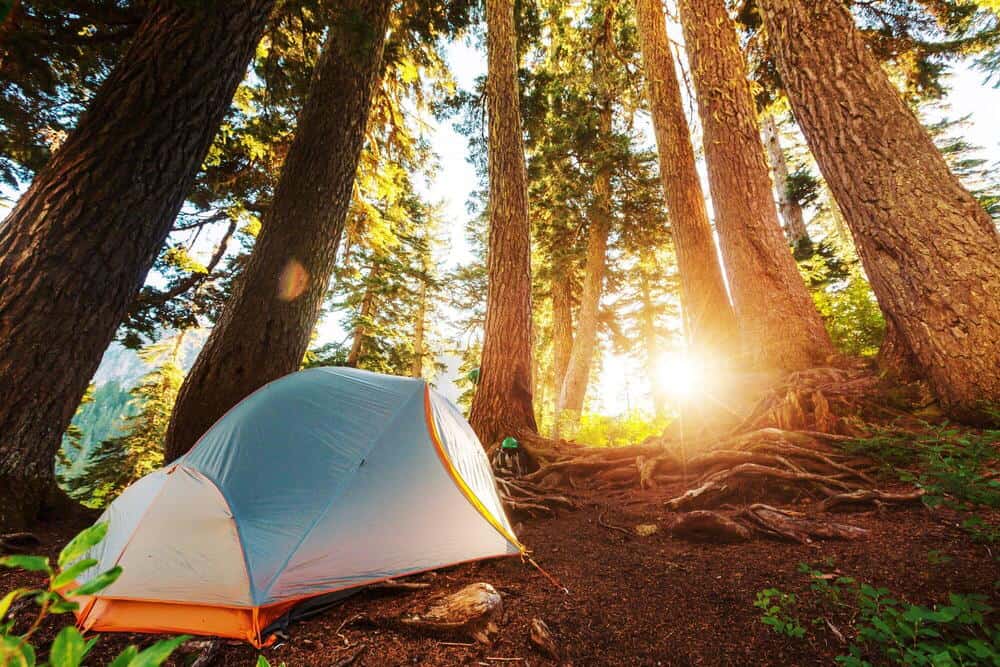Camping in the summer can be a fantastic experience, but it’s crucial to stay cool to fully enjoy your outdoor adventure. This guide will help you beat the heat and make the most of your camping trip, even in hot weather.
Campsite Selection and Setup
Choosing the right location is key to staying cool. Look for shaded areas with a good breeze and avoid low-lying spots that trap heat. When setting up your tent, orient it to maximize shade and airflow. Consider disassembling your tent during the day to prevent heat buildup.
For more tips on selecting the perfect tent, check out our ultimate guide to buying a camping tent.
Gear and Equipment for Cooling
Invest in a tent with ample mesh for ventilation and lightweight, breathable materials. Optimize your sleeping system with summer-rated sleeping bags or sheets and insulated sleeping pads to block ground heat. Don’t forget cooling accessories like portable fans, misting systems, and cooling towels.
Clothing and Personal Care
Wear light-colored, loose-fitting, breathable fabrics and don’t forget sun protection. Use wet bandanas or cooling scarves for personal cooling. Taking a cold shower or swim before bedtime can also help you stay comfortable through the night.
Hydration and Nutrition
Staying hydrated is crucial in hot weather. Drink plenty of water and electrolyte-rich beverages throughout the day. For guidance on how much water to bring camping, refer to our detailed article.
Opt for light, refreshing meals that don’t require cooking and pack cold snacks and frozen treats. Manage your cooler efficiently by using frozen water jugs as dual-purpose coolants.
Activities and Time Management
Plan heat-friendly activities for early morning or late evening, and incorporate midday rest periods. Water-based activities like swimming or water parks are great for staying cool during peak heat hours.
Night-time Cooling Strategies
Optimize your sleeping conditions by removing rain flies for better ventilation and using battery-powered fans inside the tent. Consider alternative sleeping arrangements like hammock camping for increased airflow.
Heat Safety and First Aid
Be aware of the symptoms of heat-related illnesses and take preventative measures. Acclimatize to hot weather and use a buddy system to monitor each other’s condition. Heat-related illnesses can escalate quickly, so it’s crucial to recognize early signs. Symptoms of heat exhaustion include heavy sweating, dizziness, headache, nausea, and muscle cramps.
If left untreated, this can progress to heat stroke, characterized by high body temperature, confusion, and even loss of consciousness. To prevent these conditions, gradually expose yourself to hot weather before your trip to help your body acclimatize. Stay hydrated, take frequent breaks in the shade, and avoid strenuous activities during the hottest parts of the day. Implement a buddy system where camping partners regularly check on each other, looking for signs of heat stress. This mutual monitoring can be lifesaving, as individuals experiencing heat-related symptoms may not always recognize them in themselves.
Remember, prevention and early intervention are key to avoiding serious heat-related health issues while camping.
Environmental Considerations
Adhere to fire bans and restrictions, practice safe cooking in high heat, and follow Leave No Trace principles to minimize your impact on heat-stressed environments.
By following these strategies, you can enjoy summer camping safely and comfortably. For more tips on managing temperature extremes, check out our guide on how to stay warm while camping for those cooler nights.
Remember, with proper preparation and the right mindset, you can have an incredible camping experience even in hot weather. Stay cool, stay safe, and enjoy the great outdoors!

Leave a Reply